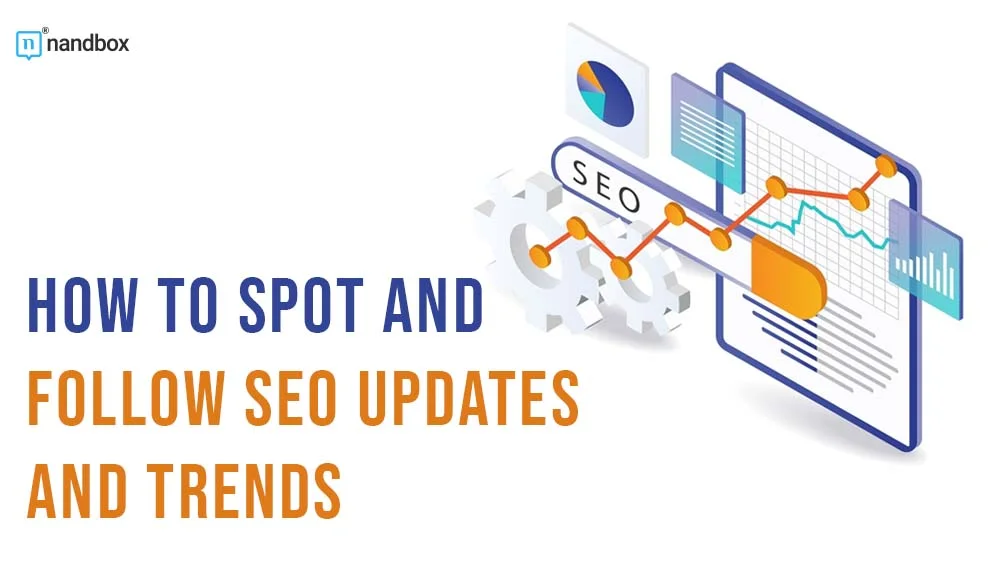A Comprehensive Guide to Spotting and Following SEO Updates and Trends
Google processes about 99,000 searches every single second, and to make those searches relevant for users, it introduces new updates throughout the year. Those Google SEO latest update trigger new SEO trends, which are important to consider to boost visibility in Search Engine Result Pages (SERPs). Google now has over 200 ranking factors, and new updates keep showing up from time to time. You just can’t afford to fall behind, especially considering that well over 90% of online experiences begin with Google or another search engine.
Search engine optimization—or SEO for short—can help boost organic traffic, especially if you use it while keeping up with every Google core update. Some sites gain, but some can lose more than 30% of their traffic overnight. Being proactive is the way to go here.
It’s important to understand the value of SEO updates and learn how emerging SERP trends can have an impact on your online presence. Using some SEO software solution is often necessary. Ninjareports.com, for instance, is a natural choice because it empowers you to optimize your site professionally. With advanced features like automated data collection, in-depth website health checks, backlink checks, and customizable dashboards, it enables you to manage everything from a single place.
The thing is that once you realize the importance of learning why following SEO updates and trends is vital, you will also understand the importance of finding a comprehensive SEO platform. If you’re still in a fix, let’s discuss how to avoid getting hit when the next Google update rolls out.
Understand the Value of SEO Updates and Trends
The most effective e-marketing strategies are those that stay abreast of the latest SEO updates and trends. The recent shifts in digital marketing and the necessity of data-driven SEO illustrate how vital it is that strategies can adapt to change.
In November 2023, Google initiated substantial changes to its search engine algorithms. Sites were forced to consider how best to optimize to maintain their rankings on the world’s leading search engine’s results pages.
Google’s new AI lead approach prioritized the user experience and sparked a trend, with sites reworking content to meet Google’s EEAT (Experience, Expertise, Authoritativeness, Trustworthiness) ranking factors.
Besides triggering changes in how Google conducted its searches, AI prompted a trend in how content was created.
With tools like ChatGPT readily available, content could be created quickly and cost-effectively, even at scale. But, it was an approach that seemed set until Google’s Helpful Content updates in 2023 and 2024. These updates revealed the emphasis was on expert, human-centric content and not, after all, generic AI.
Despite the shifting SEO landscape, the insights from such trends and updates are useful for informed decision-making. A huge number of organizations reported that their adapted SEO had a positive impact on website and market performance.
Understanding the Dynamic Nature of SEO Updates
Google is constantly refining its algorithms. There were 10 updates through 2023, including 4 core updates. Each Google update prompted an SEO response, the frequent changes highlighting the ever-changing requirements of SEO.
These updates were not only filled with such things as spam detection. They also included guidelines on what Google considered to be quality content. Failure to comply can still result in a drop in SERPS rankings and decreased organic traffic.
Statistics show that 68.7% of all clicks through Google go to the top three organic search results, and the percentage goes down considerably after position 6. Therefore, it’s important to consider those updates to avoid losing your search rankings.
Here’s a bit about how the recent Google updates have affected the SERPs and might require you to stick to new SEO technology.
| Update | Date | Key Changes | Implications |
| Google’s March 2024 Core Update | March 2024 | Addressed low-quality content, reduced “unhelpful” content by 40%, and introduced new spam policies. | Non-compliant websites saw significant drops in rankings and organic traffic. |
| The Rise of AI in SEO | 2024 | Predicted top disruptions: Generative AI, Google’s E-A-T guidelines, and automated tools. | Highlights the need for human oversight due to AI content inaccuracies. |
| Google’s October 2023 Spam Update | October 2023 | Targeted spam content in multiple languages, penalizing tactics like keyword stuffing and auto-generated content. | Websites engaging in spam tactics faced penalties, impacting search rankings. |
Artificial Intelligence and Machine Learning
Artificial intelligence (AI) and machine learning (ML) are now invaluable to SEO. AI is essential for keyword research, even for determining related words and phrases. It conducts competitor analysis and, like its counterpart, machine learning in automation, expedites many other data-heavy processes that can create insights that enhance SEO.
There are many innovative AI-powered SEO tools around. With them, SEO practitioners can manage massive amounts of data and quickly act on insights such as user intent or behavior.
With the 2023-2024 updates, the role of AI and ML in SEO has rapidly grown in significance. It is crucial specialists understand how the latest technology streamlines processes and makes acting on insights in near real-time possible, a tactic that could gain a market advantage.
It’s also important to mention that AI-powered tools have revolutionized SEO, taking over content generation, keyword research, and website optimization. It also has a role in mobile-first indexing. Many AI writing tools now use NLP (natural language processing). They analyze top-performing content, offering insights and recommendations for improving its relevance or quality. Apart from saving time, the tools ensure content is optimized for the search engines and user intent.
It’s also quite evident that there is an uptick in the popularity of AI-driven keyword platforms. They leverage machine learning algorithms to identify high-traffic keywords. They take search volume, competition, and trend data into account to unearth SEO keyword opportunities.
What’s more, AI and MI are expected to have an even greater role in SEO in the future. It will be usual for sites to optimize for the best user experience by using AI to analyze user behavior and take advantage of actionable insights.
Analyzing Emerging Trends
The SEO trends and updates of 2023 and 2024 created upheaval, but they also illustrated how important it is to stay up to date.
There are several key points marketers should be aware of.
1. Voice search optimization
This trend already sees over 50% of internet users using voice-activated searches on various devices, such as smart speakers. Adaption means focusing on natural speech to answer common inquiries and using long-tailed keywords in optimization.
2. Mobile-first Indexing
Google prioritizes the mobile versions of websites for rankings. It’s almost impossible to rank highly without one, making this one of the most important SERPS trends to date. One drawback to this rapid SEO evolution is that, regardless of device or location, a fast and responsive site is non-negotiable to Google. The search engine considers it an essential component of the best user experience.
3. User Experience (UX) as a Ranking Factor
When Google tightened its focus on the UX, its Core Web Vitals were given dominance as ranking factors. This shift of emphasis looks set for the foreseeable future in SEO, prompting many sites to reexamine their optimization in light of page load times, visual stability, and interactivity. The benefits include insights into design trends such as bold color schemes, 3D elements, immersive scrolling, and personalization.
4. EEAT and Building Authority
Google’s intention is to index and rank sites that are most likely to deliver a good UX. One component of which is expert content that aligns well with search intention. This makes demonstrating EEAT vital. This can be achieved in 4 key ways:
- by creating in-depth, well-researched content
- demonstrating first-hand experience and insights
- building authority through schema, bios, and off-site profiles
- earning quality backlinks from trusted sites
5. AI and Automation in SEO
You can also notice an SEO evolution due to AI. AI and automation make it easier to implement effective optimization and stay ahead of search engine marketing trends. However, it has limits and should only be used as a useful tool that boosts efficiency rather than the sole tactical resource. As Google has identified, it’s human creativity and expertise that encourage the best engagement.
Future Outlook and Considerations
Google has already rolled out a ton of updates, and you should be ready to witness more. However, it seems that the search engine giant is going to work mainly on what it has already introduced. Here’s what to expect going forward:
Google’s Search Generative Experience (SGE) is going to get bigger. Google’s SGE offers its users comprehensive answers to their search inquiries, so they often don’t need to click through any website.
Emphasis on Expertise, Authority, and Trust (EAT) will be more than ever before. Through 2024, Google’s algorithms will favor sites that signal EAT. These sites will have quality content with recognized authors and industry experts, adding to their authoritativeness.
You should also expect a rise in Generative AI in content creation. Generative AI will be dominant in content planning and creation. Although the focus will be high-quality original content, AI will assist in keyword research, content ideation, drafting, and upscaling.
The Importance of Ongoing Learning and Adaptation
In the future, the arrival of a new update in SEO won’t be as shocking as it was in 2023. You need to realize that search engines will continue evolving. But with AI, staying informed and adapting will be easier. Even so, the nature of SEO demands ongoing experimentation and regular A/B testing to stay ahead of the curve. Refining strategies in light of data on user behavior will be the norm and essential to staying competitive.
Conclusion
Considering how to use new Google trends for SEO means acting on their updates. They reflect Google’s UX goals and should be the focus of the SEO to make sites visible to its search engine. The algorithms change in response to user behavior. This impacts the effectiveness of organic research and SEO. The latest SEO technology and actionable AI-powered insights are therefore, a critical component of data-driven decision-making.






